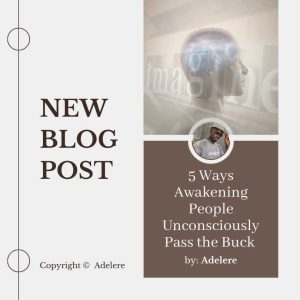
RESTORE YOUR #PERSEVERANCE OF THE #IDEAL: RISE ABOVE THE SUBTLETY OF #GIVINGUP
Reading Time: 2 minutesThere’s a surprising way of thinking that seems to be good, sometimes independent and even positively powerful. Yet it is
WELCOME TO THE POWER OF AWAKENED IMAGINATION ROYAL ACADEMY

Chapter Three
And the children struggled within her
. . . and the Lord said unto her, two
nations are in thy womb, and two manner
of people shall be separated from thy
bowels; and the one people shall be
stronger than the other people; and the
elder shall serve the younger.
Genesis 25:22-23
DUALITY IS an inherent condition of life. Everything that exists is double. Man is a dual creature with contrary principles embedded in his
nature. They war within him and present attitudes to life which are antagonistic. This conflict is the eternal enterprise, the war in heaven, the never- ending struggle of the younger or inner man ofimagination to assert His supremacy over the elder or outer man of sense.L^’
The first shall be last and the last shall be first. , ,^ „/^ Matthew 19:30 He it is, who coming after me is preferred ^^^°^^”^” John 1:27 The second man is the Lord from heaven.1 Cor. 15:47. Man begins to awake to the imaginative life the moment he feels the presence of another being in himself. In your limbs lie nations twain, rival races from their birth; one the mastery shall gain, the younger o’er the elder reign. There are two distinct centres of thought or outlooks on the world possessed by every man. The Bible speaks of these two outlooks as natural and spiritual. The natural man receiveth not the things of the spirit of God: for they are foolishness unto him: neither can he know them,
because they are spiritually discerned. 1 Corinthians 2:14 Man’s inner body is as real in the world of subjective experience as his outer physical body is real in the world of external realities, but the inner body expresses a more fundamental part of reality. This existing inner body of man must be consciously exercised and directed. The inner world of thought and feeling to which the inner body is attuned has its real structure and exists in its own higher space. There are two kinds of movement, one that is according to the inner body and another that is according to the outer body. The movement which according to the inner body is causal, but the outer movement is under compulsion. The inner movement determines the outer which is joined to it, bringing into the outer a movement that is similar to the actions of the inner body. Inner movement is the force by which all events are brought to pass. Outer movement is subject to the compulsion applied to it by the movement of the inner body. Whenever the actions of the inner body match the actions which the outer must take to appease desire, that desire will be realized.
Construct mentally a drama which implies that your desire is realized and make it one which involves movement of self. Immobilize your outer physical self. Act precisely as though you were going to take a nap, and start the predetermined action in imagination. A vivid representation of the action is the beginning of that action. Then, as you are falling asleep, consciously imagine yourself in the scene. The length of the sleep is not important, a short nap is sufficient, but carrying the action into sleep thickens fancy into fact. At first your thoughts may be like rambling sheep that have no shepherd. Don’t despair. Should your attention stray seventy times seven, bring it back seventy times seven to its predetermined course until from sheer exhaustion it follows the appointed path. The inner journey must never be
without direction. When you take to the inner road, it is to do what you did mentally before youstarted. You go for the prize you have already seen and accepted. In The Road to Xanadu Professor John Livingston Lowes says: But I have long had the feeling, which this study had matured to a conviction, that Fancy and Imagination are not two powers at all, but one. The valid distinction which exists between them lies, not in the materials with which they operate, but in the degree of intensity of the operant power itself. Working at high tension, the imaginative energy assimilates and transmutes; keyed low, the same energy aggregates and yokes together those imageswhich at its highest pitch, it merges indissolubly into one. Fancy assembles, imagination fuses.
Here is a practical application of this theory. A year ago a blind girl living in the city of San Francisco found herself confronted with a transportation problem. A rerouting of buses forced her to make three transfers between her home and her office. This lengthened her trip from fifteen minutes to two hours and fifteen minutes. She thought seriously about this problem and came to the decision that a car was the solution. She knew that she could not drive a car but felt that she could be driven in one. Putting this theory to the test that “whenever the actions of the inner self correspond to the actions which the outer, physical self must take to appease desire, that desire will be realized,” she said to herself, “I will sit here and imagine that I am being driven to my office.” Sitting in her living room, she began to imagine herself seated in a car. She felt the rhythm of the motor. She imagined that she smelled the odour of gasoline, felt the motion of the car, touched the sleeve of the driver and felt that the driver was a man. She felt the car stop, and turning to her companion, said, “Thank you very much, sir.” To which he replied, “The pleasure is all mine.” Then she stepped from the car and heard the door snap shut as she closed it. She told me that she centered her imagination on being in a car and although blind viewed the city from her imaginary ride. She did not think of the ride. She thought from the ride and all that it implied. This controlled and subjectively directed purposive ride raised her imagination to its full potency. She kept her purpose ever before her, knowing there was cohesion in purposive inner movement. In these mental journeys an emotional continuity must be sustained — the emotion of fulfilled desire. Expectancy and desire were so intensely joined that they passed at once from a mental state into a physical act.
The inner self moves along the predetermined course best when the emotions collaborate. The inner self must be fired, and it is best fired by the thought of great deeds and personal gain. We must take pleasure in our actions. On two successive days the blind girl took her imaginary ride, giving it all the joy and sensory vividness of reality. A few hours after her second imaginary ride, a friend told her of a story in the evening paper. It was a story of a man who was interested in the blind. The blind girl phoned him and stated her problem. The very next day, on his way home, he stopped in at a bar and while there had the urge to tell the story of the blind girl to his friend the proprietor. A total stranger, on hearing the story, volunteered to drive the blind girl home every day. The man who told the story then said, “If you will take her home, I will take her to work.” This was over a year ago, and since that day this blind girl has been driven to and from her office by these two gentlemen. Now, instead of spending two hours and fifteen minutes on three buses, she is at her office in less than fifteen minutes. And on that first ride to her office she turned to her good Samaritan and said, “Thank you very much, sir”; and he replied, “The pleasure is all mine.” Thus, the objects of her imagination were to her the realities of which the physical manifestation was only the witness. The determinative animating principle was the imaginative ride. Her triumph could be a surprise only to those who did not know of her inner ride. She mentally viewed the world from this imaginative ride with such a clearness of vision that every aspect of the city attained identity. These inner movements not only produce cor- responding outer movements: this is the law which operates beneath all physical appearances. He who practices these exercises of bilocation will develop unusual powers of concentration and quiescence and will inevitably achieve waking consciousness on the inner and dimensionally larger world.
Actualizing strongly, she fulfilled her desire, for, viewing the city from the feeling of her wish fulfilled, she matched the state desired and granted that to herself which sleeping men ask of God. To reahze your desire, an action must start in your imagination, apart from the evidence of the senses, involving movement of self and implymg fulfillment of your desire. Whenever it is the action which the outer self takes to appease desire, thatdesire will be realized. The movement of every visible object is caused not by things outside the body but by things within it which operate from within outward. The journey is in yourself. You travel along the highways of the inner world. Without inner movement it is impossible to bring forth anything. Inner action is introverted sensation. If you will construct mentally a drama which implies that you have realized your objective, then close your eyes and drop your thoughts inward, centering your imagination all the while in the predetermined action and partake in that action, you will become a self-determined being. Inner action orders all things according to the nature of itself. Try it and see whether a desirable ideal once formulated is possible, for only by this process of experiment can you realize your potentialities. It is thus that this creative principle is being realized. So the clue to purposive living is to center your imagination in the action and feeling of fulfilled desire with such awareness, such sensitiveness, that you initiate and experience movement upon the inner world. Ideas only act if they are felt, if they awaken inner movement. Inner movement is conditioned by self-motivation, outer movement by compulsion. Wherever the sole of your foot shall tread, the same give I unto you. Joshua 1:3 and rememberThe Lord thy God in the midst of thee is mighty. Zephaniah 3:17

Reading Time: 2 minutesThere’s a surprising way of thinking that seems to be good, sometimes independent and even positively powerful. Yet it is

Reading Time: 2 minutesQ: Here’s my question, Adelere: How do I permanently merge with the version of myself who already trades successfully, calmly,

Reading Time: 4 minutesAre you a business executive or an experienced manager with a burning desire for business growth, increased profitability, and unparalleled

Reading Time: 6 minutesAre you ready to experience a life of complete wellness? I tell you, the Law of Assumption holds the key!

Reading Time: 4 minutesIt is quite easy for a lot of people to pass the buck when someone is not yet consciously set

Reading Time: 4 minutesThe divine man in you must become cultivated and attuned to his own inner world because there are worlds within